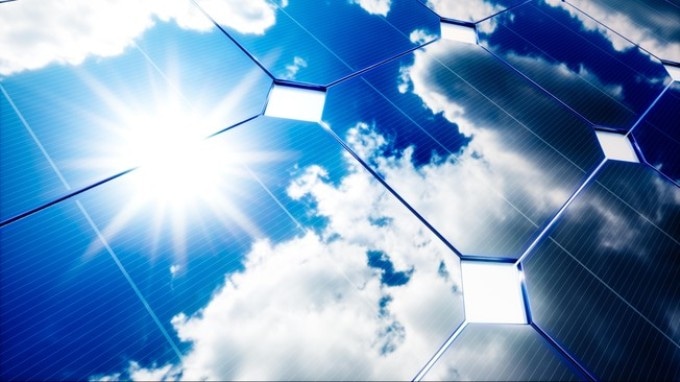Feb 6 2018
EPFL scientists have demonstrated that after electron delivery to the well-known titanium dioxide material, the extra energy is lost to heat at very short time scales. The study is featured in ACS Photonics.
 Credit: iStock photos
Credit: iStock photos
Transition metal oxides such as titanium dioxide (TiO2) are at the center of the latest surge in research and development on solar-energy technologies. With photocatalysis and solar cells at the forefront, scientists are keen in understanding every single step of the fate of charge carriers (holes and electrons) in transition metal oxides.
Sensitized solar cells have been the most explored systems in solar energy conversion. The cells comprise of a perovskite or a dye molecule adsorbed onto the surface of a mesoporous TiO2 film. The sensitizer is responsible for collecting light and injecting electrons into the film, which enables them to migrate — this is, basically, the generation of electrical current from light. The fate of the electron after delivery to the metal oxide is of extreme importance in order to optimize the cells.
One method to investigate it is to use pure transition metal oxides excited above the band gap and then observe the electron’s fate after this delivery scheme. This needs a high temporal resolution of femtoseconds (1 femtosecond is a millionth of a billionth of a second) but also a method that permits detecting and then disentangling charge carriers, which were not available until recently.
The lab of Majed Chergui at EPFL, inside the Lausanne Centre for Ultrafast Science, has presently succeeded in probing the charge carrier-relaxation in TiO2 nanoparticles after above band-gap photoexcitation. To attain this, the researchers have established a new technique, called ultrafast two-dimensional deep-ultraviolet spectroscopy. The technique permitted them to directly track electron cooling in the material’s conduction band on a time scale of less than 50 fs! This very short time scale is because of the strong coupling of the electrons to the lattice, which results in excess energy (and, thus, the kinetic energy) of the electrons being dissipated into the form of heat in a rapid manner.
These results call for the development of new strategies of electron delivery by charge injection in sensitized systems. Large excess energies improve the effectiveness of charge injection, but the timescale involved in their dissipation averts the carriers from being transported towards the electrodes in an efficient manner. Taken from another perspective, the very fast dissipation of the carrier kinetic energy is desirable in photocatalysis and may be a vital ingredient to explain why TiO2 works as an extremely efficient photocatalyst.
Revealing the subtle details of the charge carrier dynamics in this cheap and abundant material will also allow us to engineer new schemes for photonic applications.
Edoardo Baldini, Former EPFL Physics PhD Student
The Swiss National Science Foundation (NCCR:MUST) and European Research Council Advanced Grants (H2020, DYNAMOX) funded the research.